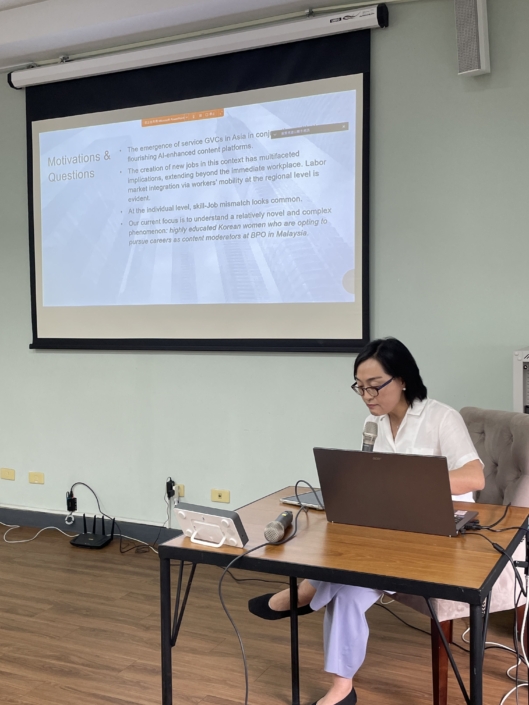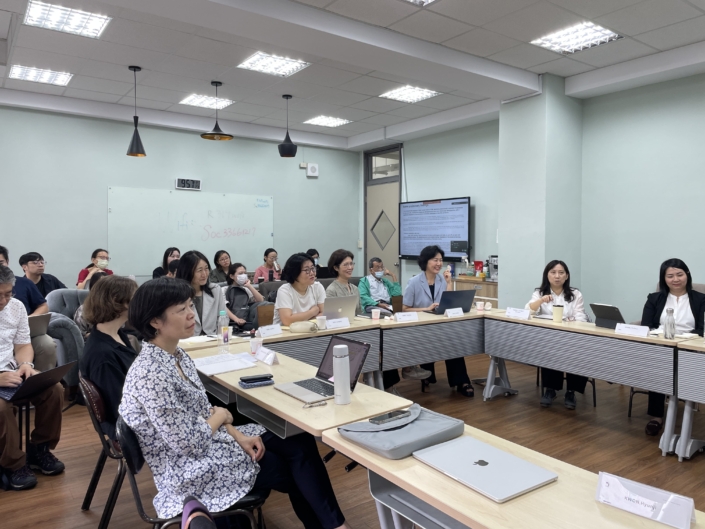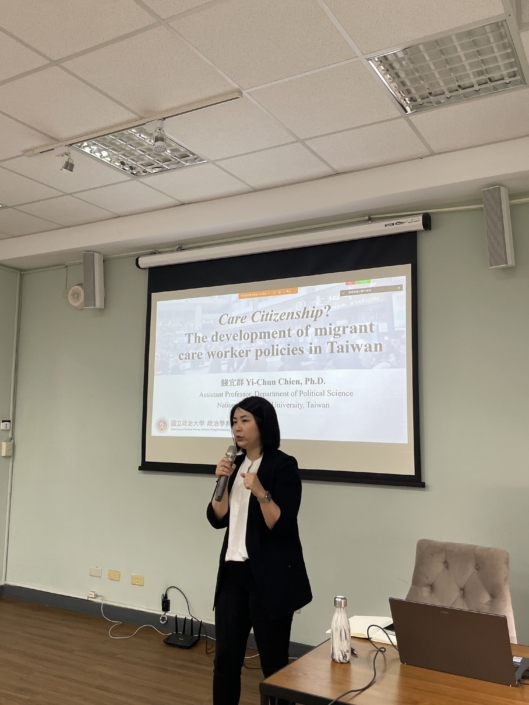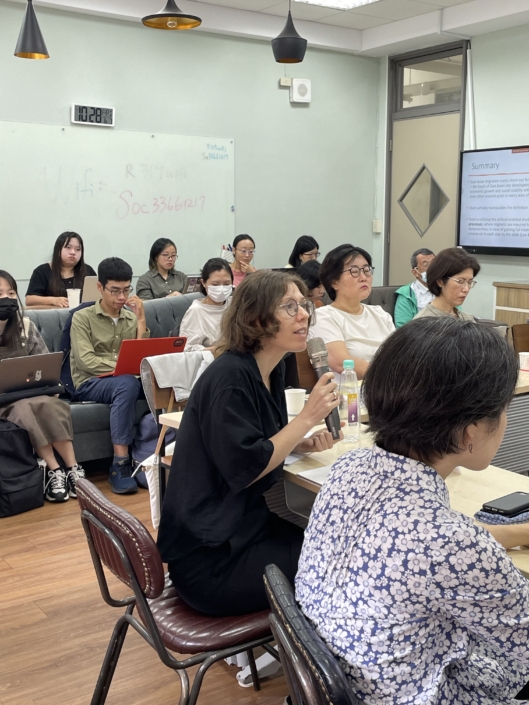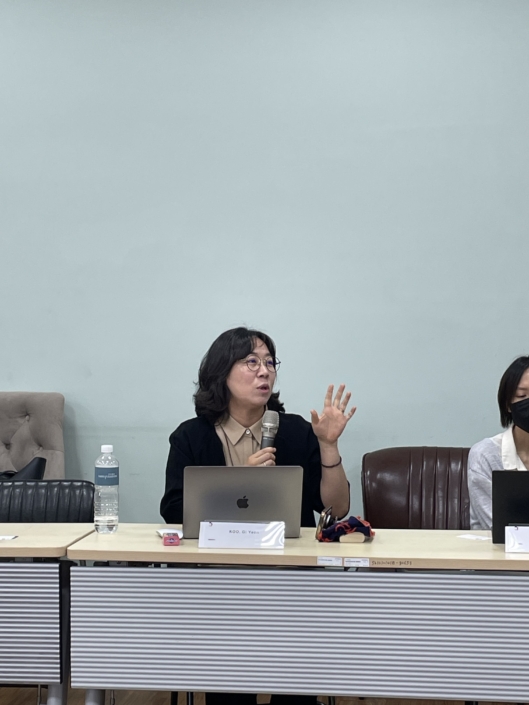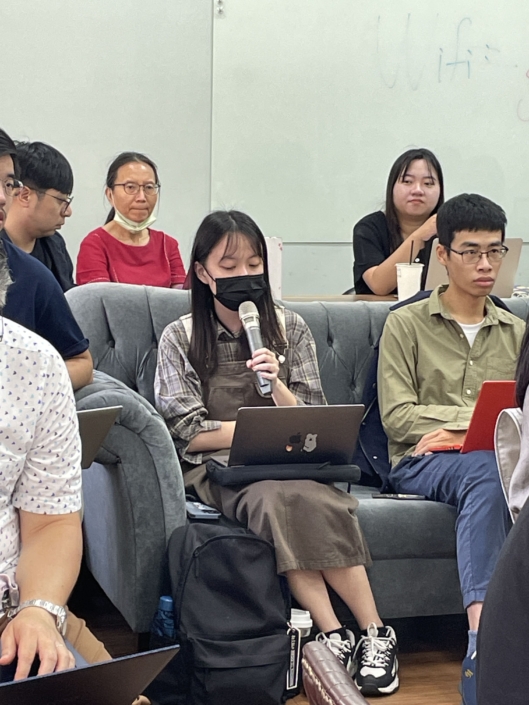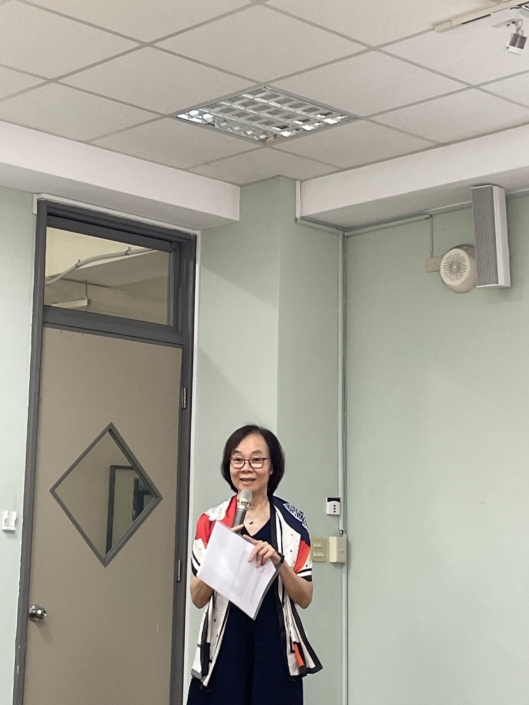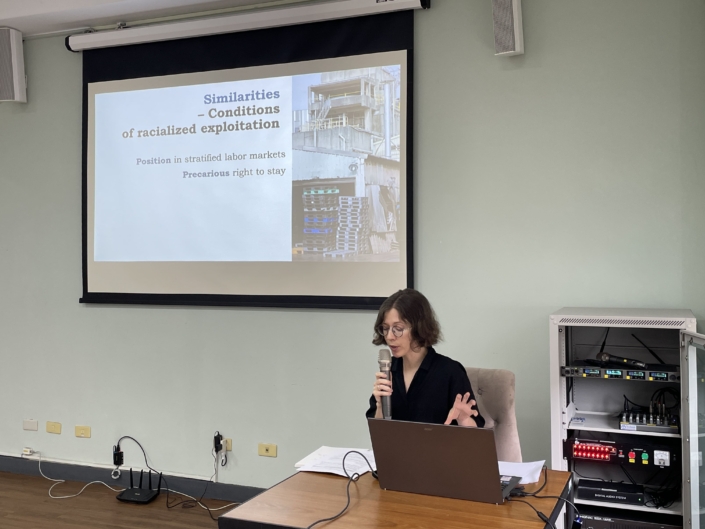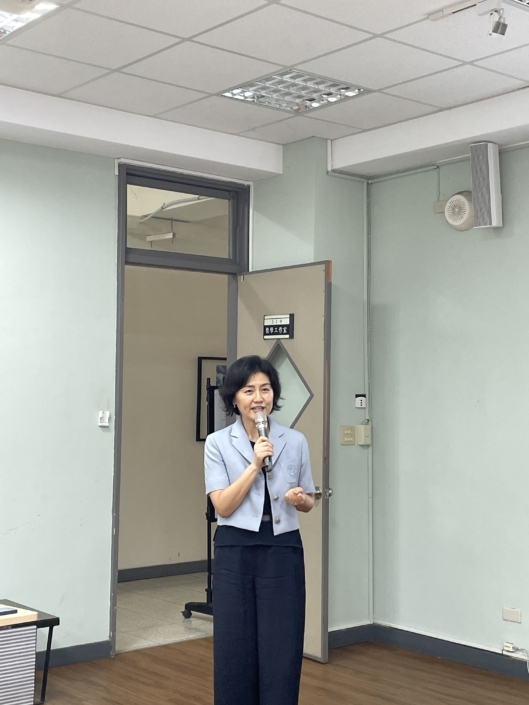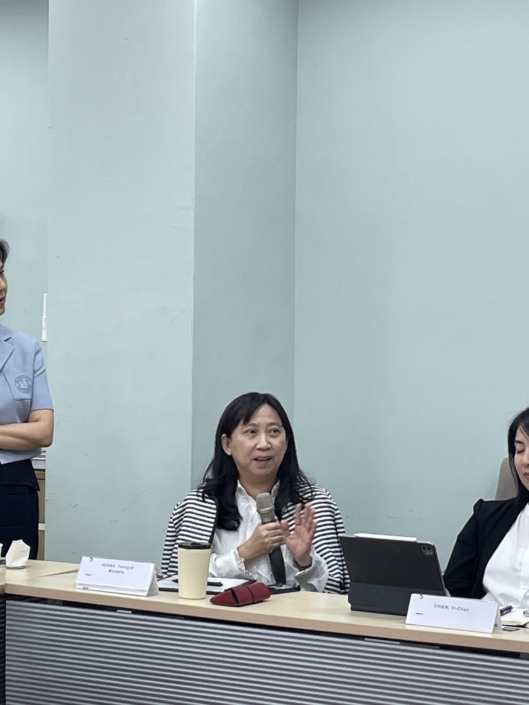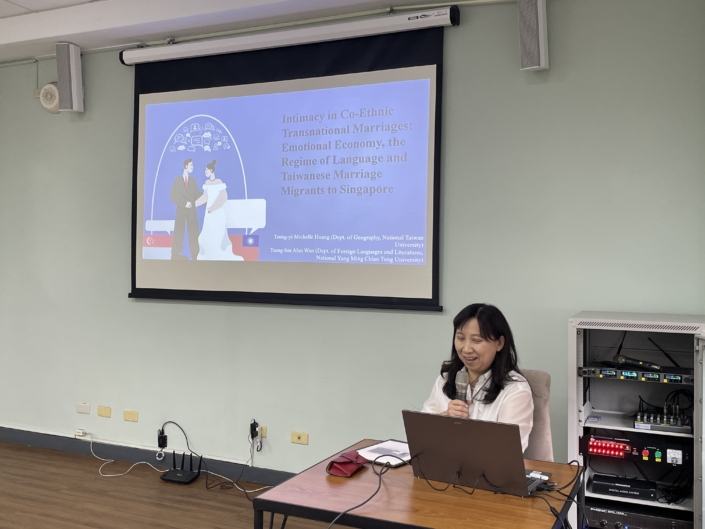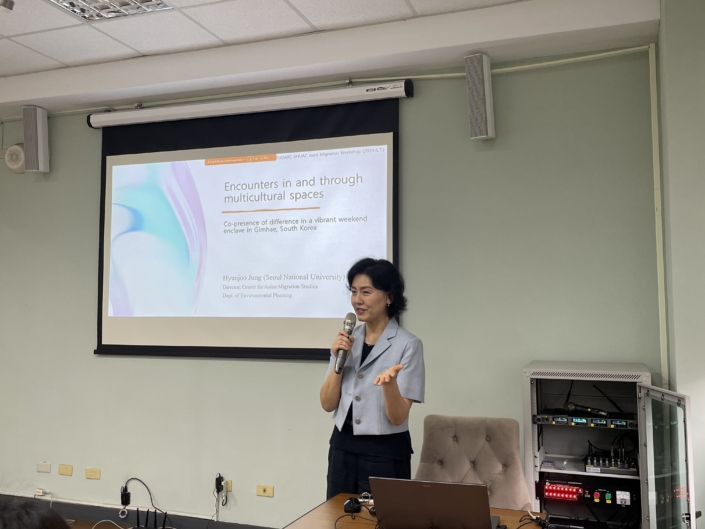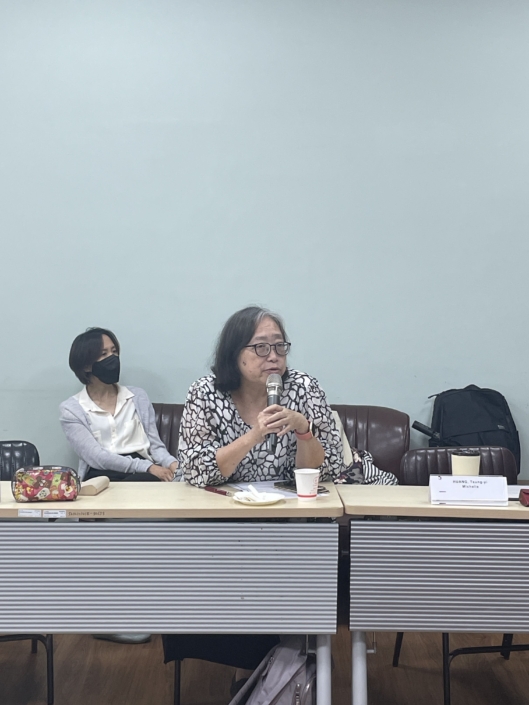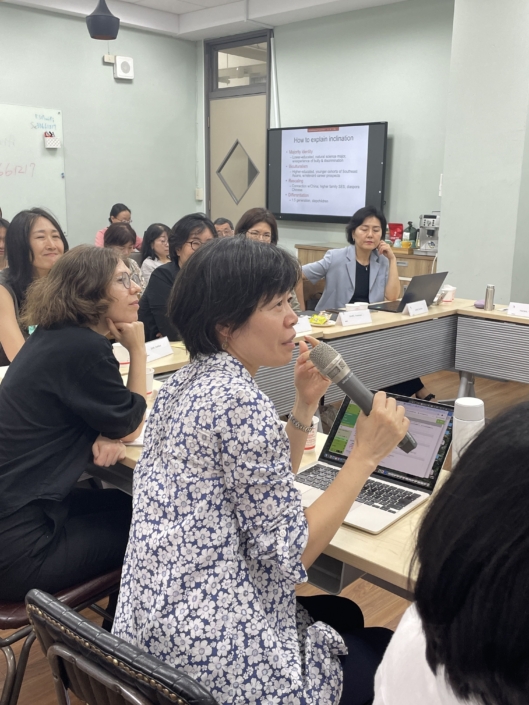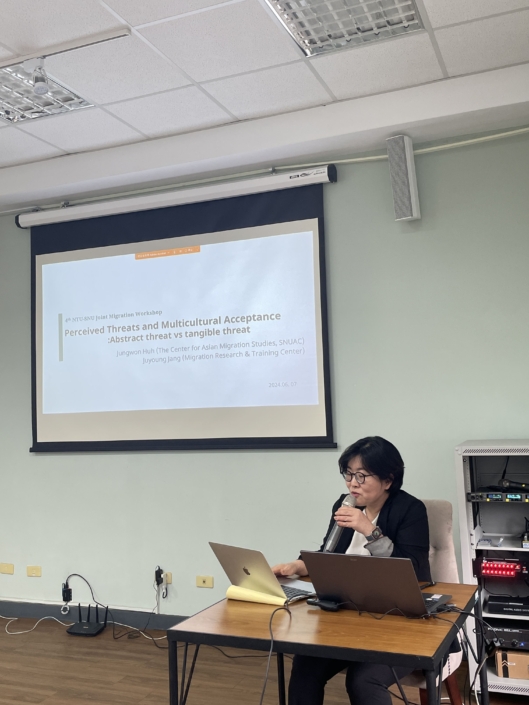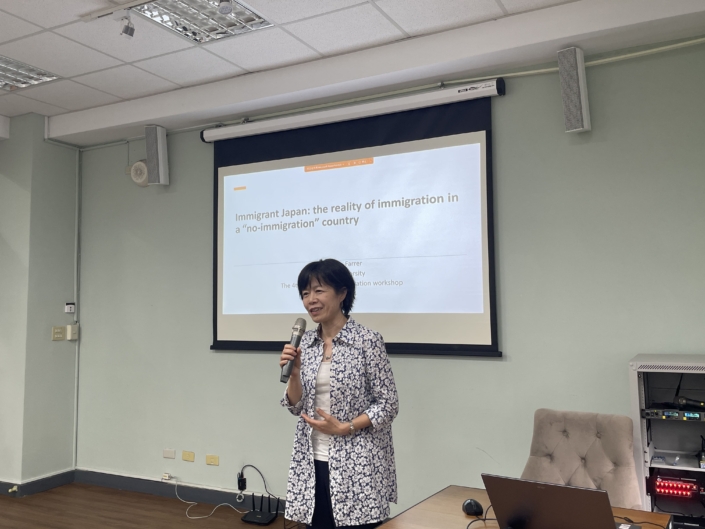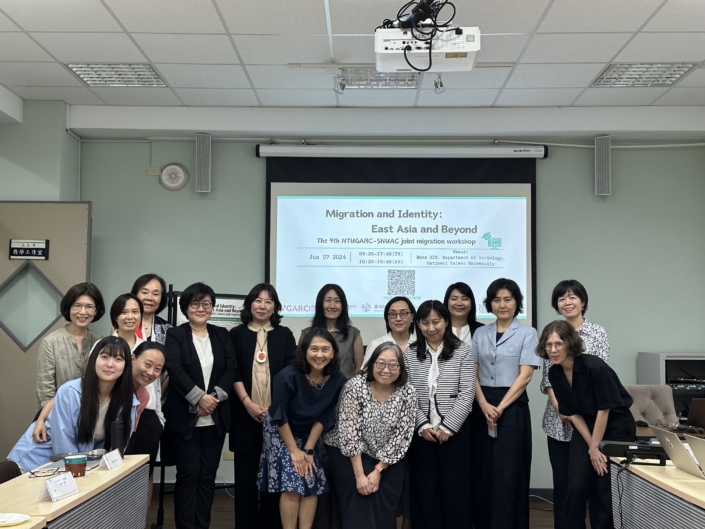Migration and Identity: East Asia and Beyond The 4th NTUGARC-SNUAC joint migration workshop
The annual migration workshop, co-hosted by the GARC and the Seoul National University Asia Center (SNUAC), was successfully held on June 7th. Being held in the busy end of the semester at both NTU and SNU, the event saw enthusiastic participation with 180 attendees joining both online and in person. In addition to 12 scholars from Korea and Taiwan, we also invited Professor Gracia Liu-Farrer from Waseda University in Japan to share cases from Japan.
This one-day event comprised four sessions: Work, Migration, and Nation-States; Migration, Mobility, and Lifestyles; Changing Cultural and Identity Boundaries; and Inclusion, Exclusion, and Othering.
In the first session, Professor KWON Hyunji discussed gender migration phenomena in the development of the global AI industry. Using content management work (such as data annotation and labelling) as an example, she highlighted that the fast-paced, highly precise, and low-autonomy nature of this industry alienates workers. Moreover, due to a customer-first workplace culture, workers endure significant emotional labor, with women often bearing the brunt of these risks. Professor CHIEN Yi-Chun from NCCU shared the latest developments in Taiwan’s migrant care worker policies, explaining how Taiwan uses migration policies as tools to address national political, economic, and social issues. Within a neoliberal framework, the state wields the power of interpretation and selects migrants who align with national interests. Dr Samia DINKELAKER compared the historical contexts and challenges of migration in Taiwan and Germany. She noted that improvements in labor rights for foreign workers in Germany stem from gradual economic development, while Taiwan’s economic miracle relies heavily on the tech industry, with migrant workers concentrated in SMEs. Geography and border control are also factors; Germany’s multiple borders facilitate higher mobility for migrants, whereas Taiwan’s insular nature restricts migrant mobility.
In the second session, Professor SHIN HaeRan used the concept of social infrastructuring to explore how Vietnamese brides, while structuring transnational marriage mechanisms, simultaneously shape Korea’s national brand and transnational identity. Professor KANG Yoonhee focused on changes in Korean education, analyzing literature and content, and interviewing Korean parents to examine how globalized education affects them and how they negotiate and adjust their roles. She pointed out that the high economic and emotional costs of transnational education have led to the emergence of overseas short-term English camps that combine learning and vacations. Professor HUANG Tsung-yi discussed how Taiwanese wives in Singapore utilize local languages, such as English, Southern Min, and Mandarin, to assert personal identity and social status in different social spaces like the workplace, neighborhood, and family, converting this social capital into human capital.
In the third session, Professor JUNG Hyunjoo introduced the concept of “encounter” (specific, unexpected meetings) to explore the construction process of so-called “multicultural cities,” investigating whether different ethnic groups coexist in the multicultural city of Gimhae. She found that Gimhae is neither a typical ethnic enclave (like Chinatowns in the Western world) nor a holiday enclave like others in Asia, and its residents exhibit a higher tolerance for multiculturalism. KOO Gi Yeon studied the Iranian diaspora and the 2022 hijab protests for women’s rights, emphasizing that the Iranian women’s movement is an ongoing struggle, strongly supported by the overseas Iranian community. Unlike the 2009 movement, which prioritized livelihood concerns in host countries, contemporary overseas Iranians aremore concerned with domestic political dynamics, although these communities are heterogeneous and divided politically. Professor LAN Pei-Chia focused on Taiwan’s young adults (aged 20-30) from new immigrant families, identifying four strategies they use to navigate identity: majority identity, biculturalism, rescaling, and differentiation. These strategies are not always consciously employed and exhibit gendered tendencies.
The final session began with Professor HUH Jungwon analyzing the relationship between perceived immigrant threats and public acceptance among South Koreans aged between 20 and 69. She found that socioeconomic background and regional immigrant composition did not affect attitudes toward immigrants, and providing accurate information did not effectively reduce negative attitudes. Abstract threat perceptions had a greater impact on acceptance attitudes than actual threats. Professors LIU Lake and TSENG Yen-Fen explored the geopolitical dynamics and Hong Kong residents in Taiwan following the 2019 anti-extradition protests. They noted that while Taiwanese people support Hong Kong’s democratic movement, Taiwan’s developmentalist immigration policy ties migrant rights to economic contributions. Thus, the worthiness of Hong Kong immigrants is judged by their contributions to Taiwanese society and perceived potential threats to Taiwanese people’s rights. Professor Gracia LIU-FARRER examined changes in Japan’s immigration policy and its underlying logic, noting that despite increasing demand for foreign labor due to an aging population and labor shortages, the distinction between Japanese and foreigners remains stark. Foreign students, often seen as high-skilled workers, struggle to obtain Japanese nationality and must manage their identities through various strategies, echoing the identity management strategies discussed by Professor LAN Pei-Chia. The workshop concluded with lively discussions and engaging exchanges.
Notes taken by Ying Tsen CHEN, translated and edited by Wei-Yun Chung

